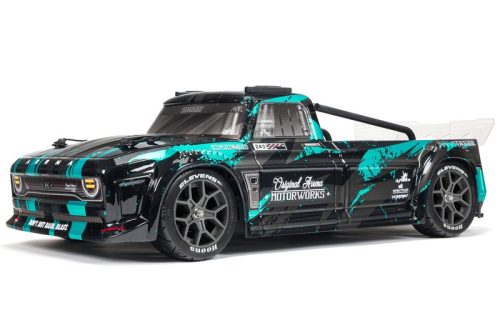Part 1: Choosing Safe Toys
When it comes to choosing toys for your children, safety should always be the top priority. Here are some tips for parents to consider when selecting safe toys for their kids:
1. Age Appropriateness
Selecting age-appropriate toys for children is crucial to ensure their safety and development. Toys that are designed for older children may have small parts or pieces that could pose a choking hazard for younger kids. By checking the recommended age range on the packaging of the toy, parents can make informed decisions about which toys are suitable for their child’s developmental stage. This simple precaution can prevent potential accidents and ensure that children’s playtime is safe and enjoyable.
When children play with toys that are age-appropriate, they are more likely to engage in activities that promote their learning and development. Age-appropriate toys are designed to match a child’s cognitive abilities and physical capabilities, encouraging them to explore, experiment, and learn new skills. On the other hand, toys that are too advanced for a child’s age may frustrate and overwhelm them, leading to potential safety hazards and hindering their overall growth.

Furthermore, selecting toys based on a child’s age helps to promote independence and autonomy. Age-appropriate toys are designed to be suitable for a child’s skill level, allowing them to play and explore on their own without constant supervision or assistance. This can foster a sense of confidence and self-esteem in children as they engage in independent play, enhancing their overall development.
2. Quality and Durability
It’s important to choose toys that are well-made and durable to ensure that they can withstand the wear and tear of playtime. Look for toys that are made of high-quality materials and have sturdy construction. Avoid toys with sharp edges, loose parts, or easily breakable components that could cause injury to your child. Investing in well-made toys may cost more upfront but can ultimately save you money in the long run by avoiding the need to replace broken or unsafe toys.
Part 2: Inspecting and Maintaining Toys
Even after choosing safe toys for your child, it’s important to regularly inspect and maintain them to ensure their safety. Here are some tips for parents to consider when inspecting and maintaining their child’s toys:
1. Check for Recalls
Parents should stay informed about toy recalls by regularly checking the Consumer Product Safety Commission’s website or signing up for recall alerts. Should a purchased toy be recalled, it’s imperative to take it away from the child immediately and adhere to the manufacturer’s instructions for returning or disposing of the product. Staying proactive about toy safety ensures that potential hazards are promptly addressed, minimizing any risks to the child’s well-being. Regularly monitoring for recalls and swiftly addressing any issues helps parents maintain a safe play environment for their children, fostering peace of mind and preventing any possible accidents or injuries related to unsafe toys.
2. Regularly Inspect for Wear and Tear
Regularly inspecting your child’s toys for signs of wear and tear is crucial to ensure their safety during playtime. Over time, toys may become damaged from regular use, potentially posing safety hazards for children. Look for any broken parts, loose pieces, or frayed edges that could cause harm. Pay special attention to toys with small parts, as they can easily break off and become choking hazards for young children. By identifying and addressing these issues early on, parents can prevent accidents and injuries.
If you notice any damage to a toy, it’s essential to take immediate action. Depending on the extent of the damage, you may be able to repair the toy if it’s safe to do so. However, if the damage is significant or compromises the safety of the toy, it’s best to discard it to prevent any potential injuries to your child. When disposing of damaged toys, ensure that they are properly discarded in a way that is safe for the environment.

In addition to regular inspections, parents should encourage children to play with their toys in a safe and gentle manner. Rough and aggressive play can lead to increased wear and tear on toys. This can potentially cause them to break or become damaged more quickly. Teaching children to respect their toys and play with them responsibly can help extend the lifespan of the toys and reduce the risk of accidents.
Part 3: Safe Play Practices
In addition to choosing safe toys and maintaining them, it’s important for parents to establish and enforce safe play practices for their children. Here are some tips for parents to consider when promoting safe play practices for their kids:
1. Supervise Playtime
It’s crucial to always supervise your child’s playtime, especially when they are engaged with toys that have small parts or pose potential choking hazards. Keeping a close eye on your child helps ensure they are using their toys in a safe manner and not putting themselves at risk of injury. Additionally, setting boundaries for where and how they can play with certain toys can help prevent accidents. By supervising play, parents can quickly intervene if they notice any unsafe behavior or potential hazards, promoting a safe play environment for their child. Supervision also allows for the opportunity to teach children about proper toy usage and establish guidelines for responsible play. Overall, active supervision is a vital component of toy safety, enabling parents to protect their children from potential risks during playtime.
2. Teach Proper Toy Use
Taking the time to teach your child how to use their toys properly is essential to minimize the risk of injury. It’s important to demonstrate how to use ride-on toys safely. Also, how to play with building blocks without toppling over, and how to handle toys with care to avoid breakage. By explaining and demonstrating the correct way to use their toys, parents can help their children develop good habits. This can help them avoid accidents during playtime. Additionally, teaching children proper toy usage instills a sense of responsibility and respect for their belongings. This fosters a safe and enjoyable play environment. By providing guidance on safe play practices, parents can empower their children to make informed decisions and engage in play that promotes their well-being and development.

Part 4: Storing Toys Safely
Properly storing toys when they are not in use is essential for maintaining their safety and preventing accidents. Here are some tips for parents to consider when storing their child’s toys safely:
1. Use Safe Storage Containers
Store toys in safe and secure containers that are designed to keep small parts and pieces contained. Avoid using storage containers with sharp edges, lids that could trap little fingers, or containers that are too heavy for your child to lift safely. Opt for age-appropriate and child-friendly storage options to keep toys organized and out of harm’s way.
2. Keep Toys Out of Reach
Store toys in a location that is out of reach of young children when they are not in use. This can help prevent accidents and injuries that could occur from children accessing toys that are not suitable for their age or development level. Consider using shelves, cabinets, or storage units to keep toys safely out of reach when they are not being played with.
In conclusion, as parents, it is our responsibility to prioritize the safety of our children when it comes to selecting and maintaining their toys. By following these toy safety tips, we can ensure that our children have a safe and enjoyable playtime experience. Choosing age-appropriate and high-quality toys is essential. Regularly inspecting and maintaining them is crucial for safety. Promoting safe play practices and storing toys safely are important steps. Being proactive and vigilant can minimize the risk of accidents and injuries. It allows children to explore, learn, and have fun in a secure, protected environment. Prioritizing toy safety is an ongoing commitment, not just a one-time activity. It ensures the well-being of our children as they grow and play. Let’s make toy safety a top priority. We can provide our children with joy of play in a safe and secure environment.





